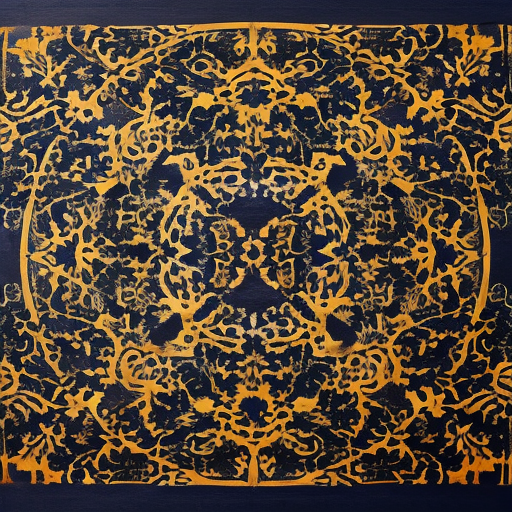Summary: The art of stencil involves creating an image or design by cutting out a pattern on a material and then applying paint or ink through the cut-out areas onto a surface. Stencils have been used for centuries in various forms and have become popular in modern art and street art. This summary explores the history, techniques, and contemporary uses of stencils in art.
History of Stencils
Stenciling has a long history, dating back to ancient times. The earliest known stencils were found in caves in France and Spain, created by blowing pigment over the hand to create a negative image. Stencils were also used in ancient Egypt and China for decorative purposes. In the 20th century, stencils gained popularity as a means of mass production for advertising and signage.
Stencil Techniques
Stencil techniques vary depending on the desired outcome and the medium used. The most common technique involves cutting a design or image out of a stencil material, such as paper, plastic, or metal. The stencil is then placed on the desired surface, and paint or ink is applied using a brush, sponge, or spray. Another technique involves creating a negative stencil by covering the entire surface with the stencil material and then cutting out the desired design.
Contemporary Uses of Stencils
Stencil art has gained significant popularity in contemporary art and street art. Artists use stencils to create intricate and detailed designs quickly and efficiently. Stencil art can be found in galleries, museums, and public spaces around the world. Street artists often use stencils to create political or social commentary, as well as to beautify urban environments.
Famous Stencil Artists
Banksy is one of the most well-known stencil artists, famous for his politically charged and thought-provoking artworks. His stencils often feature black and white images with a touch of humor and satire. Blek le Rat, considered the “Father of Stencil Graffiti,” is another influential artist who popularized stencil art in the 1980s. Other notable stencil artists include Shepard Fairey, known for his iconic “Obey” campaign, and C215, known for his intricate and colorful stencil portraits.
Advantages of Stencil Art
Stencil art offers several advantages for artists. It allows for the quick reproduction of a design, making it ideal for creating multiples or large-scale artworks. Stencils also provide a level of precision and detail that can be challenging to achieve with freehand techniques. Additionally, stencils can be easily stored and reused, making them a practical choice for artists who work on various surfaces.
Conclusion
Stencil art has a rich history and continues to be a popular form of artistic expression. From ancient cave paintings to contemporary street art, stencils have evolved and adapted to various mediums and techniques. Artists use stencils to create intricate designs, political statements, and visually striking artworks. With its versatility and efficiency, stencil art will likely continue to be a prominent feature in the art world.












